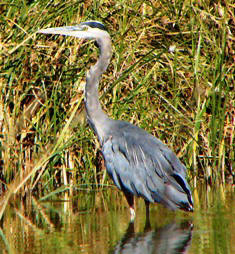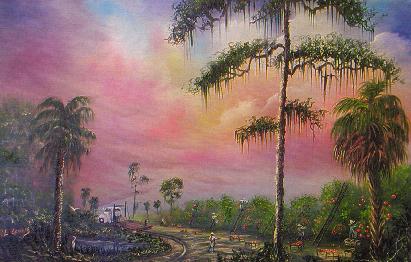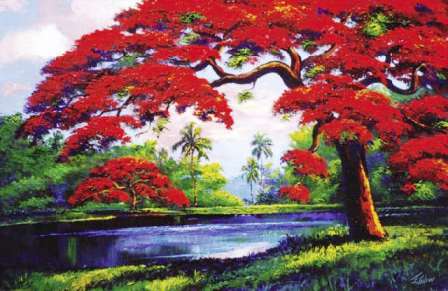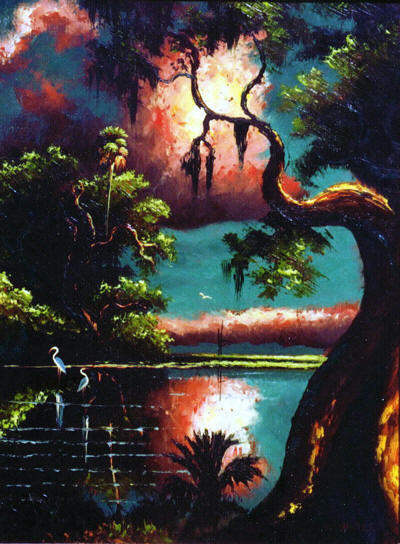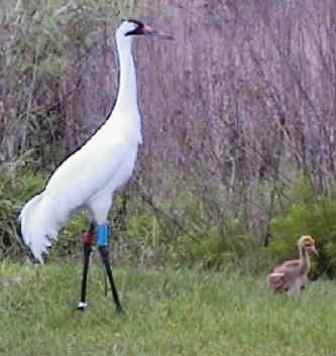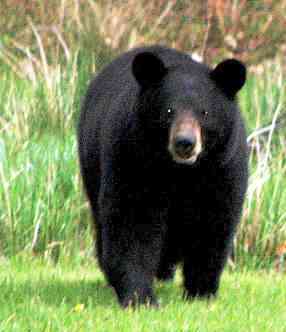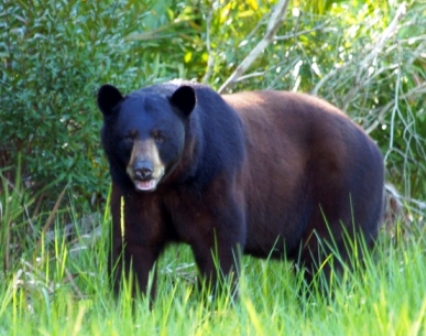Monday, February 23, 2015
The Great Blue Heron
Monday, February 16, 2015
The Florida Highwaymen
In the early 1950’s through the 1980’s a group of twenty-six African-American artists painted beautiful landscapes that displayed the serene, undeveloped Florida landscape of their time. They were from Fort Pierce, Florida and later became known as the "Highwaymen". The 26 painters latched onto art as a way to escape a more grueling fate: picking or crating oranges in the local groves.
Their artwork was primal and raw depicting idyllic views of the Florida landscape, before rampant development would reconfigure the state's topography forever.
The birth of the Highwaymen can be traced to 1954 in Fort Pierce,
Florida, when a young African-American painter named Harold Newton met
an established white painter named Albert "Beanie" Backus. Backus
encouraged Newton to paint landscapes, and the young man eagerly
obliged. Another African-American painter, Alfred Hair, began studying
under Backus and for the next few years, Hair, Newton and a widening
circle of associates produced Florida landscapes. The Highwaymen artists
knew they could make a living painting, but they knew they had to be
different. Mr. Backus was a prominent white artist and could sell his
paintings for hundreds of dollars in galleries and shows; no gallery
would show the work of unknown, self-taught African-Americans.
Monday, February 9, 2015
Whooping it up
The tallest bird in North America, the Whooping Crane
was once at the brink of extinction. It is making a steady recovery
thanks to intensive management efforts in Canada and the United States,
and As of April 2007 there were about 340 whooping cranes living in the
wild, and another 145 living in captivity. The whooping crane is still
one of the rarest birds in North America. Whooping cranes occurred
naturally in the eastern United States until the mid-twentieth century,
and there are records of whooping cranes in Florida until the 1930s. The
whooping crane is endangered mainly as a result of habitat loss. At one
time, the range for these birds extended throughout Midwestern North
America.
In order to help the whooping cranes endure, ultra light aircraft has been used to bring them south for breeding. Prior to 2009, all ultra-light led cranes wintered at the Chassahowitzka NWR, located near Crystal River, Florida. After a disastrous storm killed most of the young whooping cranes in 2007, the decision was made to split the flock into two groups. Now, so long as enough eggs are available, some juveniles are led to St. Marks and others to Chass. A total of 27 chicks over the past few years have spent their first winter growing into young adults on the St. Marks NWR.
So of the migrating birds don't make their destination and for a bird named Levi, it was the lure of romance that always caused him to fall short of his destination.For six years, Levi, an adult whooping crane, would make the long migration from Wisconsin to Citrus County’s coastline only to come up a handful of miles short of his summertime haunts in the marshland of the Chassahowitzka National Wildlife Refuge.Each year when he flew by a female song from a whooping crane in Homosassa Springs Wildlife Park would cause him to fly off course. “She would call out to him when the wild cranes would fly over and he would dive right in here,” Art Yerian said the park manager. Finally the decision was made to allow Levi to stay at the park and the result could be so new whooping cranes.
In order to help the whooping cranes endure, ultra light aircraft has been used to bring them south for breeding. Prior to 2009, all ultra-light led cranes wintered at the Chassahowitzka NWR, located near Crystal River, Florida. After a disastrous storm killed most of the young whooping cranes in 2007, the decision was made to split the flock into two groups. Now, so long as enough eggs are available, some juveniles are led to St. Marks and others to Chass. A total of 27 chicks over the past few years have spent their first winter growing into young adults on the St. Marks NWR.
So of the migrating birds don't make their destination and for a bird named Levi, it was the lure of romance that always caused him to fall short of his destination.For six years, Levi, an adult whooping crane, would make the long migration from Wisconsin to Citrus County’s coastline only to come up a handful of miles short of his summertime haunts in the marshland of the Chassahowitzka National Wildlife Refuge.Each year when he flew by a female song from a whooping crane in Homosassa Springs Wildlife Park would cause him to fly off course. “She would call out to him when the wild cranes would fly over and he would dive right in here,” Art Yerian said the park manager. Finally the decision was made to allow Levi to stay at the park and the result could be so new whooping cranes.
Monday, February 2, 2015
Bear Hunting in Florida?
There
have been more and more black bear sightings in Florida. According to
the FWC You are more likely to see a panther or a black bear today in
Florida than someone here 40 years ago! There was a total of 2,257
Florida black bear sighting reports as of June 2014, with more than 500
of those reports containing uploaded photographs. Sightings of bears
were reported in 59 of the state’s 67 counties.
To report a
bear
sighting contact the FWC.
The Florida Fish and Wildlife Conservation Commission may be poised to again allow bear hunts in the state. However, Citrus County will be among some of the counties exempt because of low populations of black bears. According to the Citrus County Chronicle, the controversial black bear management plan will be presented by officials at the commission’s meeting Feb. 4 to 5 in Jacksonville.
According to FWC officials, the decision about the plan is mainly due to an increase in bear-human interactions which has included attacks on people, bears being struck by vehicles and an exponential increase in calls to the FWC hot line about bears.
The average black bear male weighs about 350 pounds while a female average weight is 150 pounds. The bears' diet is about 80% vegetation. Foods include berries, acorns, insects and palmetto hearts. The average home range of an adult female black bear is almost 11 square miles' a male's is around 66 square miles. A healthy bear population needs at least 400,000 acres to survive. To protect an area of that size in a highly-developed Florida requires preserving the connections between core habitats. Bears inhabit both wetlands and upland forest habitats.
The Florida Fish and Wildlife Conservation Commission may be poised to again allow bear hunts in the state. However, Citrus County will be among some of the counties exempt because of low populations of black bears. According to the Citrus County Chronicle, the controversial black bear management plan will be presented by officials at the commission’s meeting Feb. 4 to 5 in Jacksonville.
According to FWC officials, the decision about the plan is mainly due to an increase in bear-human interactions which has included attacks on people, bears being struck by vehicles and an exponential increase in calls to the FWC hot line about bears.
The average black bear male weighs about 350 pounds while a female average weight is 150 pounds. The bears' diet is about 80% vegetation. Foods include berries, acorns, insects and palmetto hearts. The average home range of an adult female black bear is almost 11 square miles' a male's is around 66 square miles. A healthy bear population needs at least 400,000 acres to survive. To protect an area of that size in a highly-developed Florida requires preserving the connections between core habitats. Bears inhabit both wetlands and upland forest habitats.
Subscribe to:
Posts (Atom)
